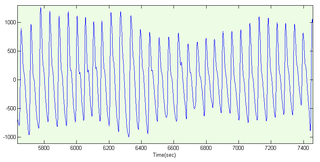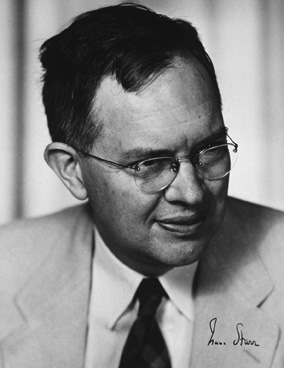Related Research Articles

The aorta is the main and largest artery in the human body, originating from the left ventricle of the heart, branching upwards immediately after, and extending down to the abdomen, where it splits at the aortic bifurcation into two smaller arteries. The aorta distributes oxygenated blood to all parts of the body through the systemic circulation.

The heart is a muscular organ in most animals. This organ pumps blood through the blood vessels of the circulatory system. The pumped blood carries oxygen and nutrients to the body, while carrying metabolic waste such as carbon dioxide to the lungs. In humans, the heart is approximately the size of a closed fist and is located between the lungs, in the middle compartment of the chest, called the mediastinum.

Blood pressure (BP) is the pressure of circulating blood against the walls of blood vessels. Most of this pressure results from the heart pumping blood through the circulatory system. When used without qualification, the term "blood pressure" refers to the pressure in a brachial artery, where it is most commonly measured. Blood pressure is usually expressed in terms of the systolic pressure over diastolic pressure in the cardiac cycle. It is measured in millimeters of mercury (mmHg) above the surrounding atmospheric pressure, or in kilopascals (kPa). The difference between the systolic and diastolic pressures is known as pulse pressure, while the average pressure during a cardiac cycle is known as mean arterial pressure.

Heart murmurs are unique heart sounds produced when blood flows across a heart valve or blood vessel. This occurs when turbulent blood flow creates a sound loud enough to hear with a stethoscope. Turbulent blood flow is not smooth. The sound differs from normal heart sounds by their characteristics. For example, heart murmurs may have a distinct pitch, duration and timing. The major way health care providers examine the heart on physical exam is heart auscultation; another clinical technique is palpation, which can detect by touch when such turbulence causes the vibrations called cardiac thrill. A murmur is a sign found during the cardiac exam. Murmurs are of various types and are important in the detection of cardiac and valvular pathologies.

In cardiac physiology, cardiac output (CO), also known as heart output and often denoted by the symbols , , or , is the volumetric flow rate of the heart's pumping output: that is, the volume of blood being pumped by a single ventricle of the heart, per unit time. Cardiac output (CO) is the product of the heart rate (HR), i.e. the number of heartbeats per minute (bpm), and the stroke volume (SV), which is the volume of blood pumped from the left ventricle per beat; thus giving the formula:

A ventricle is one of two large chambers toward the bottom of the heart that collect and expel blood towards the peripheral beds within the body and lungs. The blood pumped by a ventricle is supplied by an atrium, an adjacent chamber in the upper heart that is smaller than a ventricle. Interventricular means between the ventricles, while intraventricular means within one ventricle.

A pulmonary artery is an artery in the pulmonary circulation that carries deoxygenated blood from the right side of the heart to the lungs. The largest pulmonary artery is the main pulmonary artery or pulmonary trunk from the heart, and the smallest ones are the arterioles, which lead to the capillaries that surround the pulmonary alveoli.

Afterload is the pressure that the heart must work against to eject blood during systole. Afterload is proportional to the average arterial pressure. As aortic and pulmonary pressures increase, the afterload increases on the left and right ventricles respectively. Afterload changes to adapt to the continually changing demands on an animal's cardiovascular system. Afterload is proportional to mean systolic blood pressure and is measured in millimeters of mercury.

A photoplethysmogram (PPG) is an optically obtained plethysmogram that can be used to detect blood volume changes in the microvascular bed of tissue. A PPG is often obtained by using a pulse oximeter which illuminates the skin and measures changes in light absorption. A conventional pulse oximeter monitors the perfusion of blood to the dermis and subcutaneous tissue of the skin.

Bicuspid aortic valve (BAV) is a form of heart disease in which two of the leaflets of the aortic valve fuse during development in the womb resulting in a two-leaflet (bicuspid) valve instead of the normal three-leaflet (tricuspid) valve. BAV is the most common cause of heart disease present at birth and affects approximately 1.3% of adults. Normally, the mitral valve is the only bicuspid valve and this is situated between the heart's left atrium and left ventricle. Heart valves play a crucial role in ensuring the unidirectional flow of blood from the atrium to the ventricles, or from the ventricle to the aorta or pulmonary trunk. BAV is normally inherited.
Compliance is the ability of a hollow organ (vessel) to distend and increase volume with increasing transmural pressure or the tendency of a hollow organ to resist recoil toward its original dimensions on application of a distending or compressing force. It is the reciprocal of "elastance", hence elastance is a measure of the tendency of a hollow organ to recoil toward its original dimensions upon removal of a distending or compressing force.

The atrium is one of the two upper chambers in the heart that receives blood from the circulatory system. The blood in the atria is pumped into the heart ventricles through the atrioventricular mitral and tricuspid heart valves.
The respiratory rate is the rate at which breathing occurs; it is set and controlled by the respiratory center of the brain. A person's respiratory rate is usually measured in breaths per minute.

The Norwood procedure is the first of three surgeries intended to create a new functional systemic circuit in patients with hypoplastic left heart syndrome and other complex heart defects with single ventricle physiology. The first successful Norwood procedure involving the use of a cardiopulmonary bypass was reported by Dr. William Imon Norwood, Jr. and colleagues in 1981.

The aortic arch, arch of the aorta, or transverse aortic arch is the part of the aorta between the ascending and descending aorta. The arch travels backward, so that it ultimately runs to the left of the trachea.
Impedance cardiography (ICG) is a non-invasive technology measuring total electrical conductivity of the thorax and its changes in time to process continuously a number of cardiodynamic parameters, such as stroke volume (SV), heart rate (HR), cardiac output (CO), ventricular ejection time (VET), pre-ejection period and used to detect the impedance changes caused by a high-frequency, low magnitude current flowing through the thorax between additional two pairs of electrodes located outside of the measured segment. The sensing electrodes also detect the ECG signal, which is used as a timing clock of the system.

Isaac "Jack" Starr, known as the father of ballistocardiography, was an American physician, heart disease specialist, and clinical epidemiologist notable for developing the first practical ballistocardiograph. His early academic positions included being an assistant professor in pharmacology and later the first Hartzell Professor of Research Therapeutics at the Perelman School of Medicine at the University of Pennsylvania as well as dean of the school from 1945 to 1948.

Ioannis Thomas Pavlidis is a Greek American scholar. He is the distinguished Eckhard-Pfeiffer Professor of Computer Science at the University of Houston, founder, and director of the Affective and Data Computing Laboratory, formerly known as the Computational Physiology Lab (CPL).
Bioinstrumentation or Biomedical Instrumentation is an application of biomedical engineering which focuses on development of devices and mechanics used to measure, evaluate, and treat biological systems. The goal of biomedical instrumentation focuses on the use of multiple sensors to monitor physiological characteristics of a human or animal for diagnostic and disease treatment purposes. Such instrumentation originated as a necessity to constantly monitor vital signs of Astronauts during NASA's Mercury, Gemini, and Apollo missions.
Gari David Clifford is a British-American physicist, biomedical engineer, academic, and researcher. He is the Chair of Emory's Department of Biomedical Informatics and a Professor of Biomedical Engineering and Biomedical Informatics at Emory University and Georgia Institute of Technology.
References
- ↑ Ballistocardiography at the U.S. National Library of Medicine Medical Subject Headings (MeSH)
- ↑ Gordon, J. W. (April 1877). "Certain Molar Movements of the Human Body produced by the Circulation of the Blood". J Anat Physiol. 11 (Pt 3): 533–536. PMC 1309740 . PMID 17231163.
- ↑ Kim, Chang-Sei; Ober, Stephanie L.; McMurtry, M. Sean; Finegan, Barry A.; Inan, Omer T.; Mukkamala, Ramakrishna; Hahn, Jin-Oh (2016-08-09). "Ballistocardiogram: Mechanism and Potential for Unobtrusive Cardiovascular Health Monitoring". Scientific Reports. 6 (1): 31297. Bibcode:2016NatSR...631297K. doi:10.1038/srep31297. ISSN 2045-2322. PMC 4977514 . PMID 27503664.
- ↑ Ballistocardiography, a bibliography. NASA Technical Reports Server (Report). September 1965. hdl: 2060/19650025919 .
- ↑ Pinheiro, E.; Postolache, O.; Girão, P. (2010). "Theory and Developments in an Unobtrusive Cardiovascular System Representation: Ballistocardiography". The Open Biomedical Engineering Journal. 4: 201–216. doi: 10.2174/1874120701004010201 . PMC 3111731 . PMID 21673836.
- ↑ Shao, Dangdang; Tsow, Francis; Liu, Chenbin; Yang, Yuting; Tao, Nongjian (2017). "Simultaneous Monitoring of Ballistocardiogram and Photoplethysmogram Using a Camera". IEEE Transactions on Biomedical Engineering. 64 (5): 1003–1010. doi:10.1109/TBME.2016.2585109. PMC 5523454 . PMID 27362754.
- Half a century of contributing to medical care and society
- James S. Walker, 2002, Physics, Prentice Hall, p. 243–244
- Measuring the Heart's Kick
- Simultaneous Monitoring of Ballistocardiogram and Photoplethysmogram Using a Camera Dangdang Shao, "IEEE Transactions on Biomedical Engineering", Volume: 64, Issue: 5, May 2017, p. 1003–1010